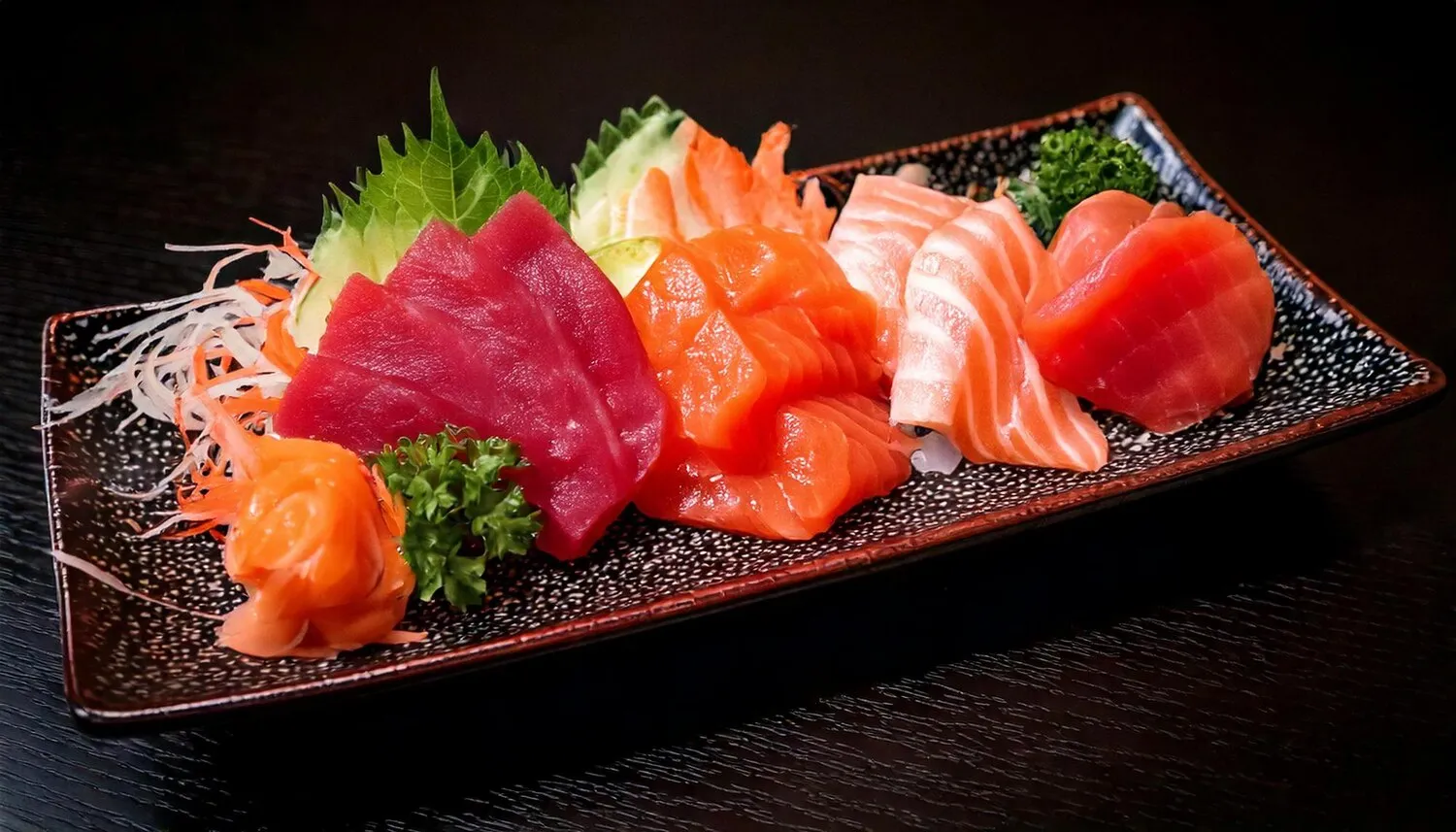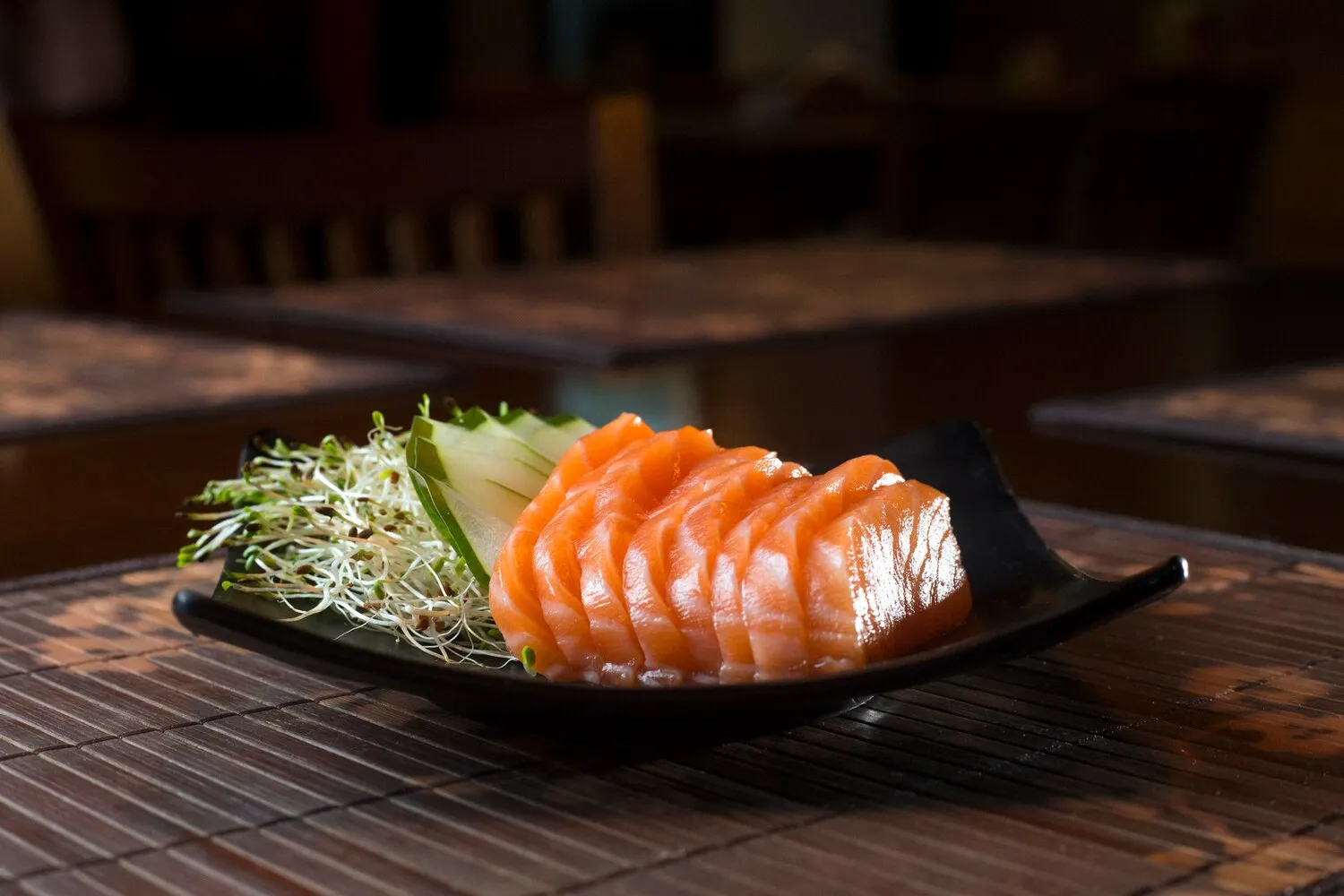
Sashimi
Freshly sliced sashimi.
Nutrition Facts
* The % Daily Value (DV) tells you how much a nutrient in a serving of food contributes to a daily diet. 2,000 calories a day is used for general nutrition advice.
The origins of sashimi can be traced back to the Muromachi period (1336–1573) in Japan. Before adequate refrigeration, cutting fish into thin slices helped preserve freshness and allowed chefs to inspect the fish for parasites. Sashimi was initially closely related to sushi, which involved preserving fish in fermented rice. Over time, sashimi evolved into a distinct culinary art form emphasizing the quality and freshness of the fish itself.
Sashimi holds a significant cultural role in Japan, representing respect for the ingredients and the chef's skill. It's a dish often enjoyed on special occasions and signifies the quality of the event.
Presentation
The presentation of sashimi is crucial. It's considered an art form, with careful attention paid to the arrangement of the slices, garnishes (like shiso leaves, daikon radish, and seaweed), and the overall aesthetic appeal. The presentation is meant to enhance the dining experience and reflect the chef's skill.
Freshness and Quality
Sashimi emphasizes the importance of freshness and high-quality ingredients. Only the freshest, highest-grade fish is used, as the dish relies entirely on the natural flavor and texture of the raw ingredients. This highlights the Japanese culinary philosophy of respecting the inherent qualities of the food.
Seasonal Variations
The type of fish used for sashimi often varies with the seasons, reflecting the availability of different species. Certain types of fish are considered more desirable and flavorful during specific times of the year, adding a layer of seasonal appreciation to the dish.
The primary flavor profile of sashimi is clean, delicate, and reflective of the specific fish being used. Subtle nuances are enhanced by soy sauce and wasabi, adding salty and spicy elements.
The taste of sashimi depends greatly on the fish. Tuna (maguro) offers a rich, buttery flavor, while salmon (sake) has a milder, slightly sweet taste. White fish like sea bream (tai) have a delicate, clean flavor. The texture is just as important as the taste, ranging from firm and chewy to soft and melt-in-your-mouth. Soy sauce provides saltiness and umami, while wasabi adds a sharp, pungent kick that cleanses the palate.
Wasabi Usage
Avoid dissolving wasabi directly into the soy sauce. Instead, place a small amount of wasabi directly on the fish before dipping it lightly into the soy sauce. This allows you to control the amount of wasabi and experience the flavors individually.
Soy Sauce Dipping
Dip only the edge of the sashimi into the soy sauce, avoiding excessive soaking. Overpowering the delicate flavor of the fish with soy sauce is considered impolite and diminishes the tasting experience.
Eating Order
It's generally recommended to eat sashimi from lighter to richer flavors. Start with white fish like sea bream and progress to fattier cuts like tuna belly (otoro). This allows you to fully appreciate the subtle differences in flavor.
Ginger and Daikon
Pickled ginger (gari) is used as a palate cleanser between different types of sashimi. Grated daikon radish can also be used to refresh the palate.
Explore additional Sashimi dishes and restaurants
Explore SashimiDiscover top dining spots and culinary experiences in La Spezia.
Explore La SpeziaLearn more about the food culture, restaurant scene, and culinary heritage of Italy.
Explore Italy
